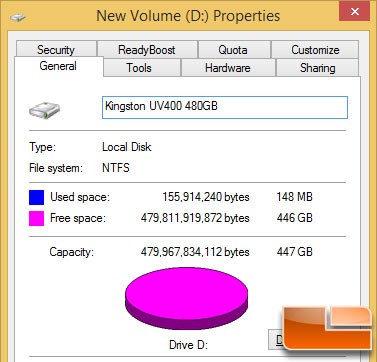- Dec 8, 2010
- 11,897
- 74
- 91
I got a question for those who understand SSD's better than myself. True usable SSD capacity is different from advertised capacity, but why exactly, and is there a way to calculate it reliably?
Kingston's client SSD's are overprovisioned by 7%, see http://www.kingston.com/en/ssd/overprovisioning. So a 480GB drive will have roughly 447GB of actual capacity and that is what Windows reports as well, e.g. see Kingston UV400 review by legitreviews. But Windows reports GiB (1024^3 bytes), and I've thought both SSD and hard disk capacities are advertised in GB (1000^3 bytes), is this not true?
Finally, do you know if the overprovisioning % is different for different manufacturers or even among different product families?
Kingston's client SSD's are overprovisioned by 7%, see http://www.kingston.com/en/ssd/overprovisioning. So a 480GB drive will have roughly 447GB of actual capacity and that is what Windows reports as well, e.g. see Kingston UV400 review by legitreviews. But Windows reports GiB (1024^3 bytes), and I've thought both SSD and hard disk capacities are advertised in GB (1000^3 bytes), is this not true?
Finally, do you know if the overprovisioning % is different for different manufacturers or even among different product families?



